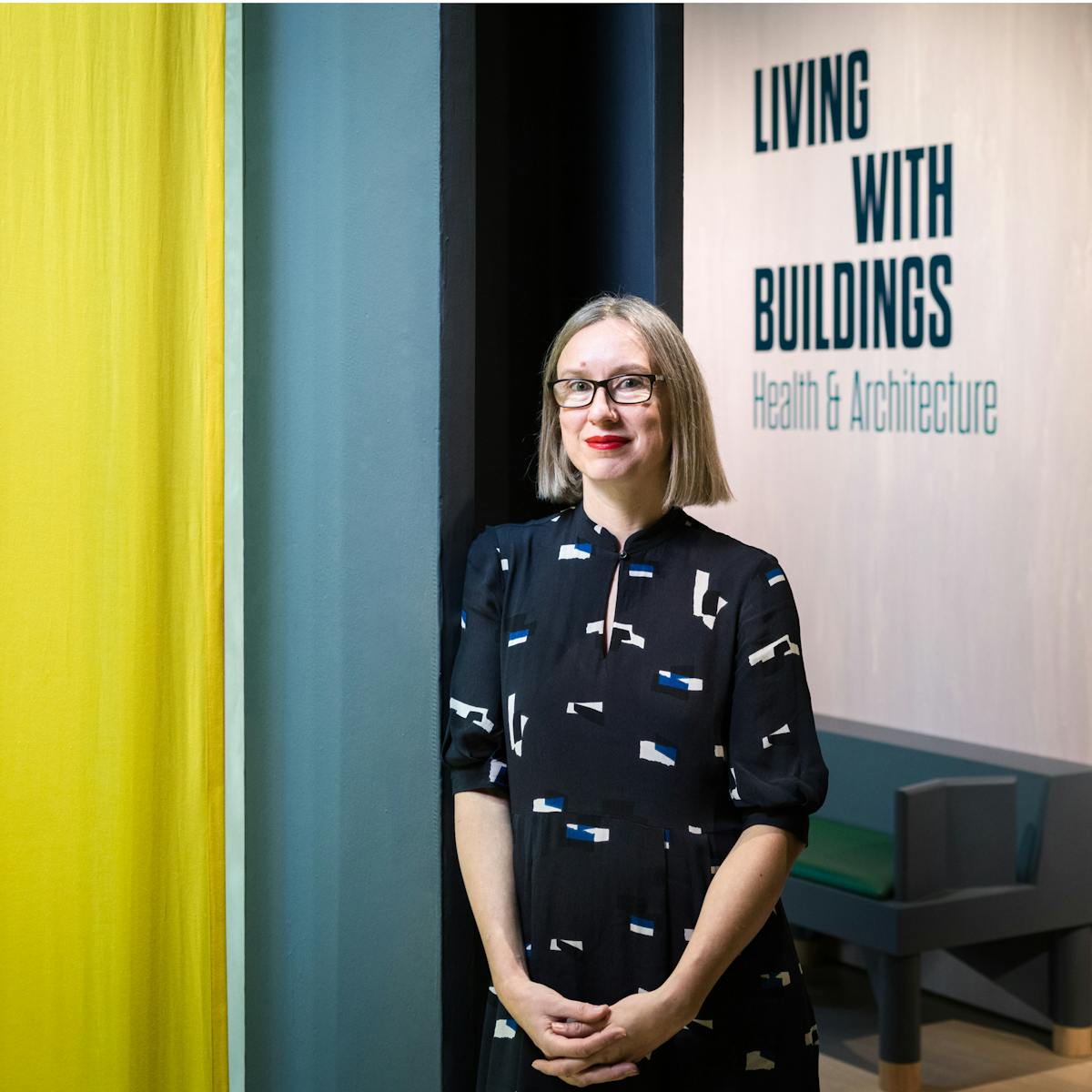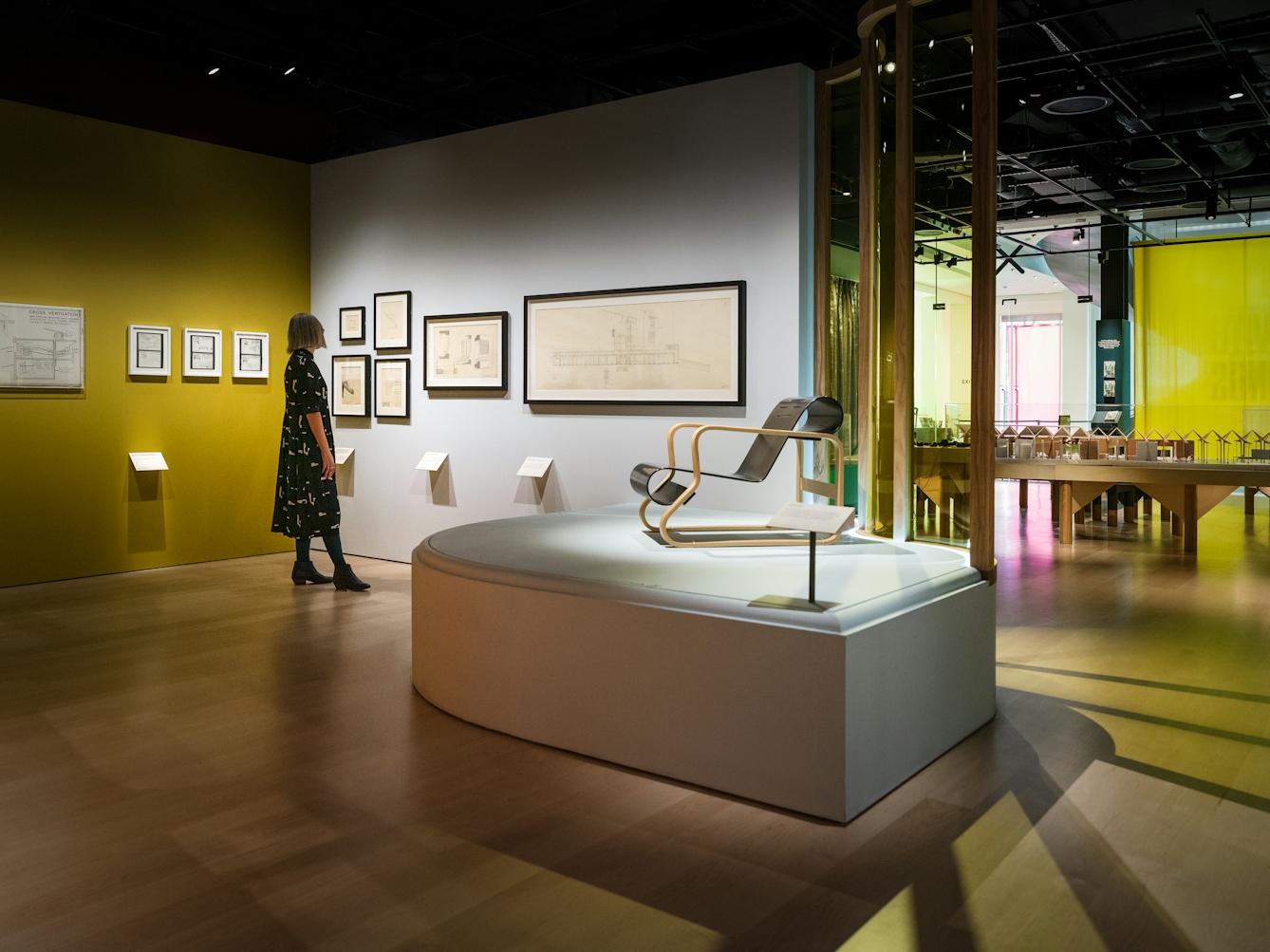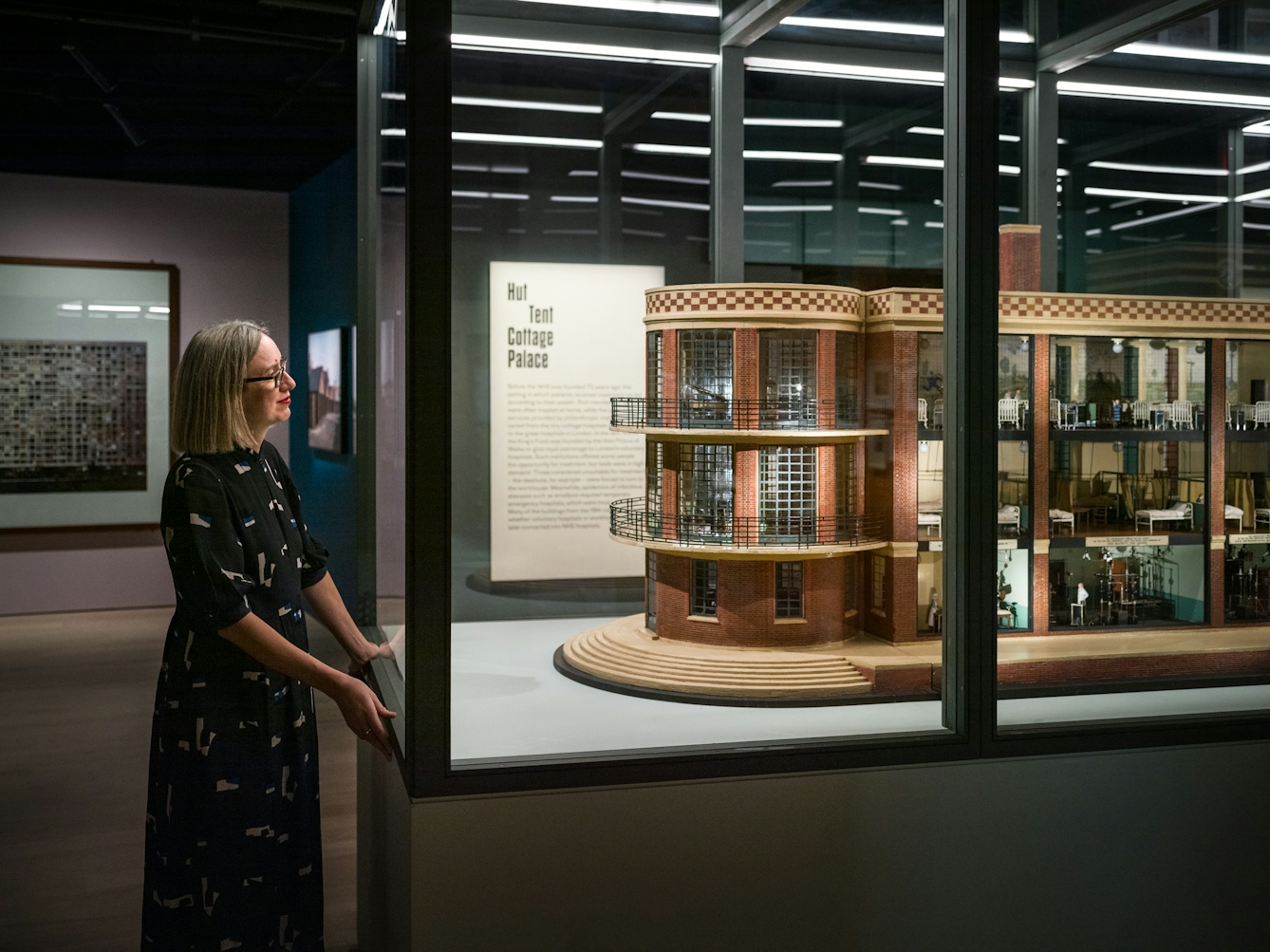Emily Sargent muses on the complex relationships between buildings and human health, and tells Gwen Smith how she came to choose a TB sanatorium for display, and why the show inevitably has a political bite.
Inside the mind of Living with Buildings curator, Emily Sargent
Words by Gwendolyn Smith
- Interview

There are many remarkable things about the Paimio Sanatorium in Finland, one of the most trailblazing medical buildings of the last century, and, therefore, a focal point of Wellcome Collection’s ‘Living with Buildings’ exhibition. But for the show’s curator Emily Sargent, its vibrancy was what first caught her eye. “What really struck me was how colourful it was. It is gleaming white on the outside – an ocean liner-esque modernist structure that you encounter in the forest.”
The building’s designer, Alvar Aalto, intended to conjure a sense of indoor sunshine, hence the bright yellow floor as you enter. This has a potent physical impact, Sargent insists. “It makes everyone I’ve been in with stand up straighter.”
What effect might this exuberant design have had on a rural-dwelling tuberculosis patient in the sanatorium in the 1930s? she muses. (Paimio, which opened in 1933, was designed specifically for the treatment of TB.)
“They might have not been in a building of that size before and would be entering an incredibly modern structure, stepping into a hospital setting that they might never come out of, or at least might not come out of for another year. The use of colour could have been powerful in terms of how they felt about the building and the care that they received there.”

Our health and our surroundings
This line of thinking fits snugly with what Sargent deems to be one of the overarching messages of ‘Living with Buildings’: “To look again at the things that surround us and to think about how our health relates to them.”
The exhibition charts the relationship between health and architecture from the 19th century to the present day, encompassing themes including Dickensian slum housing, post-war development, garden cities and contemporary healthcare buildings. It has an ambitious scope – although, naturally, certain subjects didn’t make the final edit, such as examining the relationship between humanity and work spaces, or, as it was pithily put in one planning session, “Where do you cry in an open-plan office?”
With breadth comes the risk that the show could feel unfocused, but Sargent wasn’t tempted to narrow it down to, say, a study of healthcare architecture. “It felt really important to make a connection between the visitors and the buildings they have the most interaction with, which are their homes – domestic architecture. There’s so much discussion about them, so much in the news.”
Where do you cry in an open-plan office?
This gives the spectacle its political bite; indeed the final point rings poignantly true. The horrifying blaze at Grenfell Tower last June broke out while the exhibition was about halfway through being devised. References to it are threaded through the show. How do you go about engaging with a subject whose devastating consequences are still being unravelled?
“It felt important not to use exploitative imagery – we have no footage or pictures of the tower on fire or after the fire. We wanted to make sure that if someone connected to the Lancaster West estate [of which Grenfell Tower was part] came along, they would be able to engage with what we’d put forward without encountering any distress triggers.”
The exhibition also shifts attention from the night of the fire to a wider narrative about how large council estates went from being a manifestation of the cradle-to-grave welfare state in the mid-20th century to a private development opportunity. There is, of course, a crucial difference here, Sargent says.
“There is a set of utopian ideals around the role of design in a lot of mid-century architecture, because you’re contributing postwar to a sense of a progressive world. A developer develops a piece of land for profit.”
MORE: On the trail of London's lost hospitals, hidden in plain sight

Linking past and present
An emphasis on context crops up in ‘Living with Buildings’ elsewhere, too. Health and architecture have been related since aeons before the show’s 19th-century start line, but the era was chosen because a path could be traced from then to the present day.
“We could have started with Roman architect Vitruvius and that would have been really fun, but we were trying to tell a story of relevance,” says Sargent, pointing out that you can see echoes of 19th-century industrialisation in the shifts from rural to urban populations still in motion across the contemporary world. Moreover, she says, it’s possible to draw a line from that period to the frustrations of Lancaster West residents over lack of maintenance and community infrastructure.
Past also concertinas into present in the enormous doll’s-house model of a hospital on display. It toured the country in the 1930s in a bid to demonstrate the facilities a modern hospital could offer, such as x-ray and operating theatres – and to thereby raise funds for the pre-NHS King Edward’s Hospital Fund.
This is the most striking exhibit for Sargent. “What I find moving about it is that I can imagine those places. I’ve been in x-ray rooms that aren’t dissimilar to that. We are living in some of the end of those visions of modernity.” It also provides a sobering image of 1930s health issues. “The solarium at the front is a particularly poignant reminder that TB and rickets were a very prevalent public-health concern at the time.”
For all the perspective and detail it offers – or, perhaps, because of this – ‘Living with Buildings’ ultimately concedes that there is no neat way to sum up the relationship between health and architecture. Many, including the poet John Betjeman, have lamented tower blocks but this view misses the knotty, nuanced big picture, says Sargent. “We are all subject to the extremely complex relationship between our individual and our collective experience of the buildings that we share.”
In other words? “For every person who cheers when a tower block is destroyed, there is somebody for whom that was their childhood home. And for every person who thinks a tower block is a prison, there is somebody who thinks it is a mountain top.”
